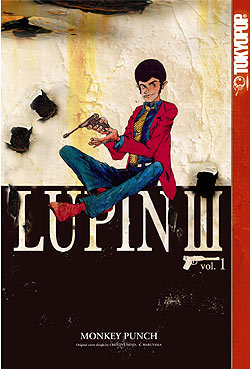The Extraordinary Adventures of Arsène Lupin, Gentleman-Burglar
I recently finished listening to the Librivox recording of The Extraordinary
Adventures of Arsène Lupin, Gentleman-Burglar. Librivox make it available as a free podcast, but I notice
the book is also available from Amazon.
This is Maurice Leblanc's classic. The Sherlock Holmes/Hercule Poirot who took the other path in life!
I first encountered the character in the Japanese anime Lupin III by Kazuhiko Kato.

read more and comment..
The fake David Blaine tapes
I can see the future. Whether you love or hate the real David Blaine, you are going to rofl when you watch these.
David Blaine Street Magic: YouTube Edition!
David Blaine Street Magic part 2 : youtube Edition!
read more and comment..
Here we go ..
Prata. The king of foods. Best served hot and slightly crispy, with a masala curry and sweet teh tarik. Its cheap..
quick.. satisfying..
That's what this blog is going to be about. Its my place to post quick satisfying stuff, no subject out of bounds.
read more and comment..
Log Buffer #54: a Carnival of the Vanities for DBAs
This week its my pleasure to host Log Buffer #54, the Carnival of the Vanities for DBAs. Thanks to Dave Edwards at
Pythian for the invite to put this together. Dave must be a very chilled
sorta guy to be able to survive each Friday, not knowing what on earth his guest editor is going to churn
out!!
Of course 11g continues to be a big topic this week.
Dan Norris adds his views on the best 11g new features to the
flurry that came out last week. Christian Bilien's having a party to celebrate ASM
fast mirror resync. Syed Jaffar Hussain discovers the alert log will now be XML. Personally I shudder; still not
convinced that XML is appropriate for log files.
It strikes me that in this period between launch and release, there's more eyeballs on docs that at any other
time in the product lifecycle;)
NB: There still seems to be some
confusion whether we are meant to know when 11g will arrive or not. Steven Chan's older post almost convinced me there's a good reason why we don't
hear dates;)
In the SQL Server world, Kalen Delaney blogs in wonderment having discovered the
dialog box that time forgot. And Bob Beauchemin has some good SQL Server book reviews.
While on book reviews, Stewart Smith is impressed by O'Reilly's Backup &
Recovery because it covers just about every way to back up and recover systems (I trust not this way).
So did PostgreSQL trounce Oracle or not? Kevin Closson
exposed the lazy reporting that seems to have sparked this "non-story". But you know how pointless it is to try and
correct the facts once they are out on the net, right?
Its a pity for the controversy, because as Jay
Pipes writes, the benchmark achievement is no mean feat for the PG dev team.
Lots of interseting stuff on mysql this week. Mats Kindahl takes mysql proxy for a decent test drive, concludes it has great
potential and offers some constructive comments on gaps to be filled. The MySQL 5 HA with DRDB and
Heartbeat guide is very well put together by Mark Schoonover (who blurs the line between blog post and technical
reference guide!)
What do I like most about open source? Take something like Jay Pipes internals
of MyISAM Concurrent insert (part 1 posted this week). Great example of hard core geek writings. Can you ever
imagine Oracle, IBM or Microsoft getting down and dirty on internals like this? I love it!
Moving on to deeper thoughts...
K. Brian Kelley mulls over what it means to be a dba, but
might be surprised that Patrick Wolf stumbled across an 11g feature that means DBA's may put Java/SOA guys out of
work.
Doug Burns ponders just how many blogs a person should have, and
in the process gave quite a few pause for thought.
Over in the Oracle Forums, activity seems
to be at a high but one wonders about the signal to noise. I think Sidhu was remarkably restrained when I
think my response may just have been jfgi!
... and that's pretty much a wrap for this week. Thanks for reading my first attempt at editing the Log Buffer. It just
remains for me to leave you with my lame attempt at a bit of 11g humour. Keep on blogging!

read more and comment..